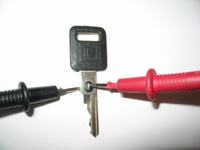MichaelNielsen
Newbie level 2
Im trying to figure out which type of sensor that suits my need.
I have 12 different objects, the 12 objects are placed randomly on a 8x8 board (64 fields), only the board can be connected to a power source,
I want to detect on which field the items are positioned, I'm thinking on inserting different strength magnets in each item and then using 64 hall sensors, but this
solution seems to be rather expensive - are there a cheaper way to accomplish this.
Edit : changed from 30 to 64 fields.
I have 12 different objects, the 12 objects are placed randomly on a 8x8 board (64 fields), only the board can be connected to a power source,
I want to detect on which field the items are positioned, I'm thinking on inserting different strength magnets in each item and then using 64 hall sensors, but this
solution seems to be rather expensive - are there a cheaper way to accomplish this.
Edit : changed from 30 to 64 fields.
Last edited:
